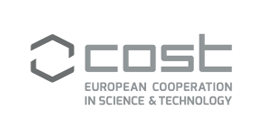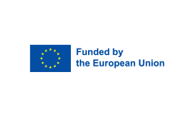Authors: Pasquale Linciano, Cecilia Pozzi, Giusy Tassone, Giacomo Landi, Stefano Mangani, Matteo Santucci, Rosaria Luciani, Stefania Ferrari, Nuno Santarem , Lorenzo Tagliazucchi, Anabela Cordeiro-da-Silva, Michele Tonelli, Donatella Tondi, Laura Bertarini, Sheraz Gul, Gesa Witt, Carolina B. Moraes, Luca Costantino, Maria Paola Costi. European Journal of Medicinal Chemistry, Volume 264, 2024
Pteridine reductase 1 (PTR1) is a catalytic protein belonging to the folate metabolic pathway in Trypanosmatidic parasites. PTR1 is a known target for the medicinal chemistry development of antiparasitic agents against Trypanosomiasis and Leishmaniasis. In previous studies, new nitro derivatives were elaborated as PTR1 inhibitors. The compounds showing a diamino-pyrimidine core structure were previously developed but they showed limited efficacy. Therefore, a new class of phenyl-, heteroaryl- and benzyloxy-nitro derivatives based on the 2-nitroethyl-2,4,6-triaminopyrimidine scaffold were designed and tested. The compounds were assayed for their ability to inhibit T. brucei and L. major PTR1 enzymes and for their antiparasitic activity towards T. brucei and L. infantum parasites. To understand the structure-activity relationships of the compounds against TbPTR1, the X-ray crystallographic structure of the 2,4,6-triaminopyrimidine (TAP) was obtained and molecular modelling studies were performed. As a next step, only the most effective compounds against T. brucei were then tested against the amastigote cellular stage of T. cruzi, searching for a broad-spectrum antiprotozoal agent. An early ADME-Tox profile evaluation was performed. The early toxicity profile of this class of compounds was investigated by measuring their inhibition of hERG and five cytochrome P450 isoforms (CYP1A2, CYP2C9, CYP2C19, CYP2D6 and CYP3A4), cytotoxicity towards A549 cells and mitochondrial toxicity. Pharmacokineticstudies (SNAP-PK) were performed on selected compounds using hydroxypropyl-β-cyclodextrins (50 % w/v) to preliminarily study their plasma concentration when administered per os at a dose of 20 mg/kg. Compound 1p, showed the best pharmacodynamic and pharmacokinetic properties, can be considered a good candidate for further bioavailability and efficacy studies.
COST (European Cooperation in Science and Technology) is a funding agency for research and innovation networks. The COST ACTIONS help connect research initiatives across Europe and enable scientists to grow their ideas by sharing them with their peers. This boosts their research, career and innovation.
One Health drugs against parasitic vector borne diseases in Europe and beyond
OneHealthdrugs
24/10/2022
23/10/2026
27/05/2022
Download file
Maria Paola Costi
Anabela Cordeiro da Silva
Maria Cristina Notarsanto
Maria Esposito and Laura Leonardi


